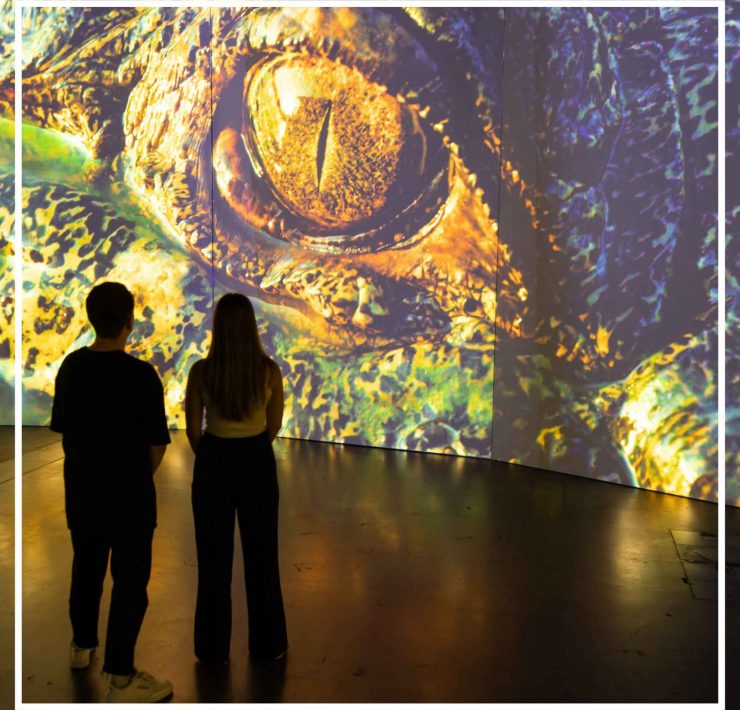Exploring Vietnam’s Most Underrated Region

Hanoi has the best beer and noodle soups, Hoi An has lantern-lit photo ops and killer banh mi, and Ho Chi Minh City – well, Ho Chi Minh City is a blaring, heaving torrent of chaos.
But the central highlands of Vietnam are a fairytale of rocky, rainforest-covered mountains jutting out of turquoise rivers, breathtakingly massive caves, winding, scenic roads, sandy lakes, and endless waterfalls.
The UNESCO World Heritage Phong Nha-Ke Bang National Park is named for the Phong Nha cave and the Ke Bang forest. It’s about a four-hour drive or bus ride north of the ancient capital of Hue, or an overnight bus south of Hanoi.
The park is one of the largest karst regions in the world, a unique rocky limestone landscape speckled with caves and grottoes, of which there are over 300 in the area.
The town of Phong Nha-Ke Bang is pretty nondescript, just one street with a few accommodation spots, a couple of motorbike repair garages, and a few driveway diners where you can pull up a stool for a bowl of pho. There’s also a tiny “clothing and accessories shop” called Phuc Dat Shop. Brilliant.
Stay at Nguyen Shack, a sustainable hostel made entirely of recycled materials and raw bamboo from local forests. Each room has two beds and a curtain for a door – perfect for clearing your lungs of Saigon’s smog. The Shack’s back deck is in the shadow of steep, rocky ridges, which are home to families of mountain goats. It’s easy to lose an hour or two in a hammock watching them jostle around.
The cafe out front also does awesome spring rolls and lemongrass chicken rice.
Next door is Easy Tiger, a multi-level hostel with a pumping restaurant and bar, pool tables, a pool, and a huge outdoor dining space with fire pits.
Regardless of where you stay, this is great place for a beer and a Western feed, if hot chips are what you crave.
The national park is known for its caves – Hang Son Doong, discovered less than a decade ago, is the largest in the world, but the least-visited. Tourists were granted access in 2013 and can only visit in small tour groups, which cost a few thousand dollars a pop.
The Phong Nha Cave was the first to open to tourists, and its only access point, through a gap in the mountain on the Son river, is what makes it so neat. It shrouds over 13km of the Son, giving it the title of longest underground river.
While the national park is home to countless caves, the most spectacular of which is the Paradise Cave. From the car park, it’s about a 20-minute ascent on foot to the cave’s entrance (or you can get a shuttle for ₫25,000 / AU$1.40 return), before a dramatic descent into the cavern from its unassuming entrance.
The Paradise Cave’s sheer size and magnificence will make you gasp. The cavern is filled with towering stalactites and stalagmites, some of which, after growing for thousands of years, are bigger than an upright bus. The cave stretches for 31km, though most visitors only walk the first kilometre along the constructed boardwalk.
Phong Nha Botanic Garden is a huge, private section of rainforest filled with waterfalls, with a mansion-sized monkey conversation area fenced off in the centre. There’s a trail you can take through the forest that weaves between boulders and alongside the waterfalls and to the many swimming pools along the way.
Entry is just ₫40,000 (AU$2.20), and it’s a magical place to spend a hot day.
A must-visit sunset spot – or incredible accommodation option – is Phong Nha Farmstay, a remote hotel in farmland with an outdoor restaurant plugged right into a flat, sprawling rice paddy across the road. Alongside wood-fired pizza, it’s one of the few eateries in Vietnam where you can get real, local wine.
But the real drawcard is the view. You can watch the sun set over the mountains that frame the almost neon-green paddies. It’s peaceful and postcard-beautiful.
To see all the beauty of Phong Nha, having your own transport is essential. Renting a scooter – or at least a push bike, if your legs can handle the inclines – and driving around the mountain roads for their arresting views is the best thing to do there.
If that’s not for you, most hostels and hotels in the area run tours and shuttles to the caves, as well as day trips or camping trips around the park.
How to get there
- Fly into Noi Bai (Hanoi) International Airport
- Drive 575km (about 11 hours) via Hồ Chí Minh Highway
- Phong Nha-Ke Bang, Bố Trạch, Quảng Bình, Vietnam
This article was originally published on March 8th, 2018 and has since been updated.








